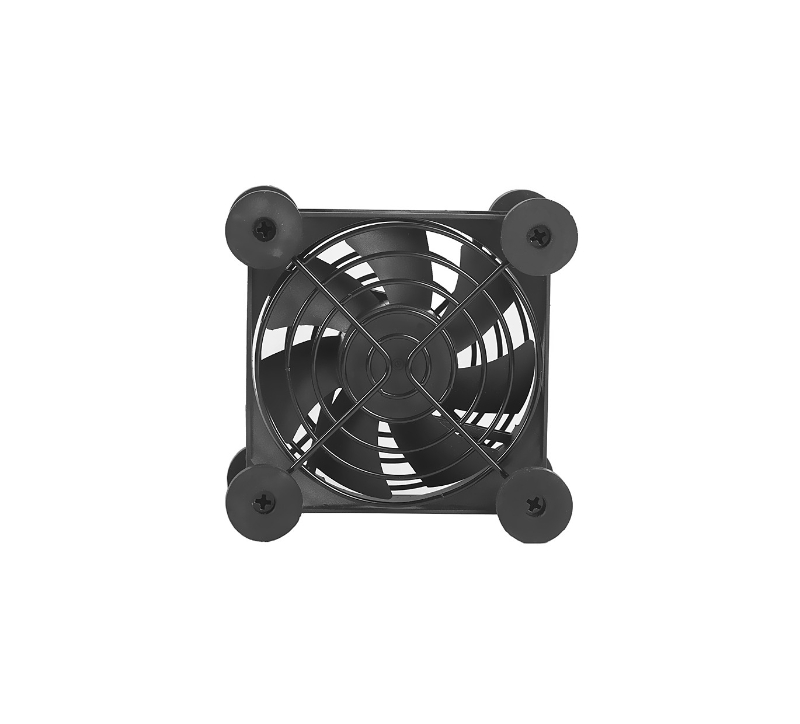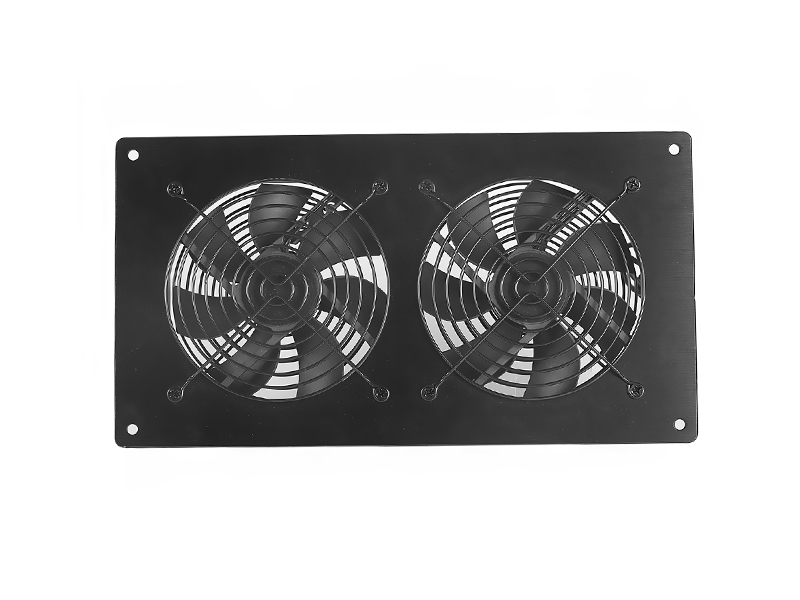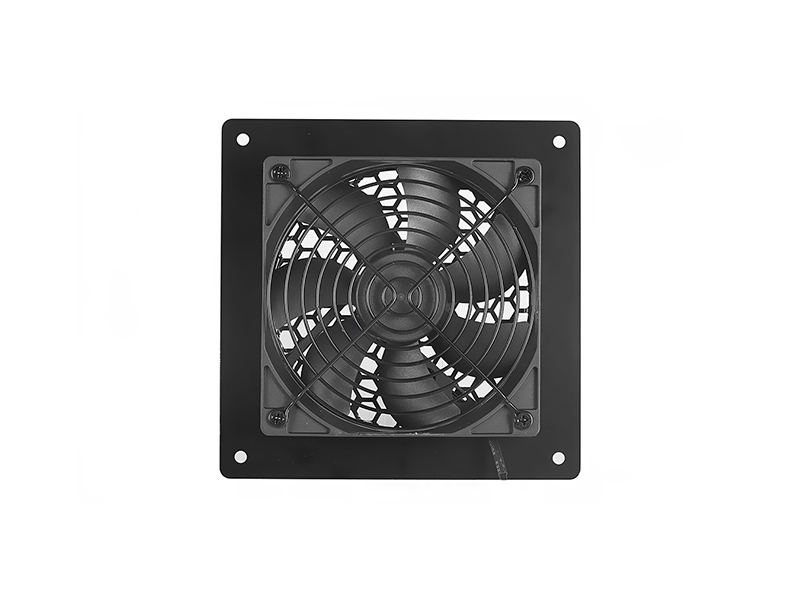Whether you're keeping a server rack from overheating, a home appliance running smoothly, or industrial machinery operating at peak efficiency, the right cooling fan is more than just an accessory—it's a critical component. DC axial fans, celebrated for their energy efficiency, quiet operation, and adaptability, are a top choice across countless applications. But with so many options on the market, how do you select the one that aligns with your specific needs? This guide breaks down the key factors to consider, ensuring you make a decision that balances performance, durability, and practicality.
At its core, a DC axial fan uses a direct current (DC) motor to spin its blades, creating airflow parallel to the fan's axis (hence “axial”). Unlike AC fans, DC models offer distinct advantages: they consume less energy, allow for precise speed control, and operate more quietly—traits that make them ideal for environments where noise and efficiency are priorities, from home electronics to medical equipment.

The magic lies in their design: air flows straight through the fan blades, moving parallel to the motor's axis. This streamlined airflow, combined with the efficiency of DC motors, makes these fans compact and powerful. Whether cooling a tiny circuit board or a large industrial system, their ability to move air effectively without excessive energy use is what sets them apart.
Selecting the right fan isn't just about picking a size or brand—it's about matching the fan's specs to your system's unique demands. Here's what to focus on:
Airflow, measured in cubic feet per minute (CFM) or liters per second (L/s), is the lifeblood of effective cooling. Too little airflow, and your equipment may overheat, leading to performance drops or even permanent damage. Too much, and you're wasting energy while increasing noise.
Start by calculating your system's cooling needs: How much heat does it generate? What's the volume of the space it occupies? Use these to determine the minimum CFM required, then choose a fan that meets (but doesn't drastically exceed) that number.
DC axial fans come in various sizes, typically defined by their diameter, but depth and mounting options matter just as much. A fan that's too large won't fit in your system, while one that's too small might not deliver enough airflow.
Smaller fans (e.g., 20mm–60mm) are great for compact devices like routers or LED lights but may lack the power for larger setups.
Larger fans (e.g., 120mm+) excel in industrial machinery or server racks but require more space.
Always check your system's available clearance and mounting holes to ensure a snug, functional fit.
DC axial fans run on specific voltages—12V, 24V, and 48V are the most common. Mismatching the fan's voltage to your system's power supply can cause malfunctions or even damage, so double-check this first.
Beyond voltage, consider power consumption (measured in watts). While DC fans are inherently more efficient than AC models, designs vary: a fan with a high-efficiency motor will save energy over time, cutting operational costs—especially in systems running 24/7.

In noise-sensitive environments—offices, bedrooms, or medical labs—a loud fan can be a dealbreaker. Noise is measured in decibels (dB), and even a 3–5 dB difference can feel significant.
DC axial fans are generally quieter than AC fans, but blade design and speed play a role: slower speeds reduce noise, while optimized blade shapes (like curved or serrated edges) minimize turbulence. For ultra-quiet setups, look for fans labeled “low noise” or “silent operation”—they're engineered to balance airflow and acoustics.
Static pressure measures a fan's ability to push air through obstacles: dust filters, tight vents, or dense equipment (think server racks with stacked components). If your system has high resistance, a fan with low static pressure will struggle to maintain airflow, leaving hot spots.
High static pressure fans are ideal for setups with filters, heat sinks, or confined spaces.
High airflow fans work best in open environments with little resistance.
Check the fan's static pressure rating (measured in inches of water or Pascals) to ensure it matches your system's obstacles.

A fan's lifespan depends largely on its environment. Here's what to watch for:
Temperature range: If your fan will operate in extreme heat (e.g., industrial ovens) or cold (e.g., outdoor enclosures), choose a model rated for that range. Most standard fans work between -10°C and 60°C, but specialized options can handle -40°C to 85°C.
Ingress Protection (IP) rating: For dusty, humid, or wet environments (e.g., factories, outdoor gear), an IP rating indicates resistance to solids and liquids. IP54 (dust-resistant, water-spray resistant) is common for general use; IP68 (dust-tight, waterproof) works for harsh conditions.
A fan that fails prematurely can shut down your entire system. Key indicators of durability include:
Bearing type:
Sleeve bearings are affordable but wear faster under continuous use or in high temperatures.
Ball bearings last longer (up to 50,000+ hours) and handle heat better—ideal for industrial use.
Fluid dynamic bearings (FDB) balance durability and quietness, making them great for noise-sensitive, long-running systems.
Lifespan and warranty: Manufacturers often list expected lifespan (based on bearing type and operating conditions). Look for fans with warranties of 2–5 years—they're a sign of confidence in quality.
Different applications demand different features. Here's how to tailor your choice:
Industrial settings (data centers, machinery): Prioritize high airflow, high static pressure, and ball bearings for 24/7 operation.
Consumer electronics (PCs, home appliances): Opt for compact, quiet fans with low power consumption.
Medical equipment: Choose low-noise, high-reliability fans with IP ratings to resist dust and liquids.
OEM/custom systems: Work with manufacturers (like EISKUHL) that offer custom sizes, voltages, or mounting options to fit unique designs.
Choosing the right DC axial fan means balancing airflow, size, voltage, noise, and environment to match your system's needs. By focusing on these factors, you'll select a fan that keeps equipment cool, saves energy, and lasts—minimizing downtime and costs.
Whether you're outfitting an industrial facility, a home PC, or a custom OEM product, EISKUHL's range of DC axial fans combines innovation, durability, and efficiency to meet your needs. With the right fan, your systems will run smoothly for years to come.